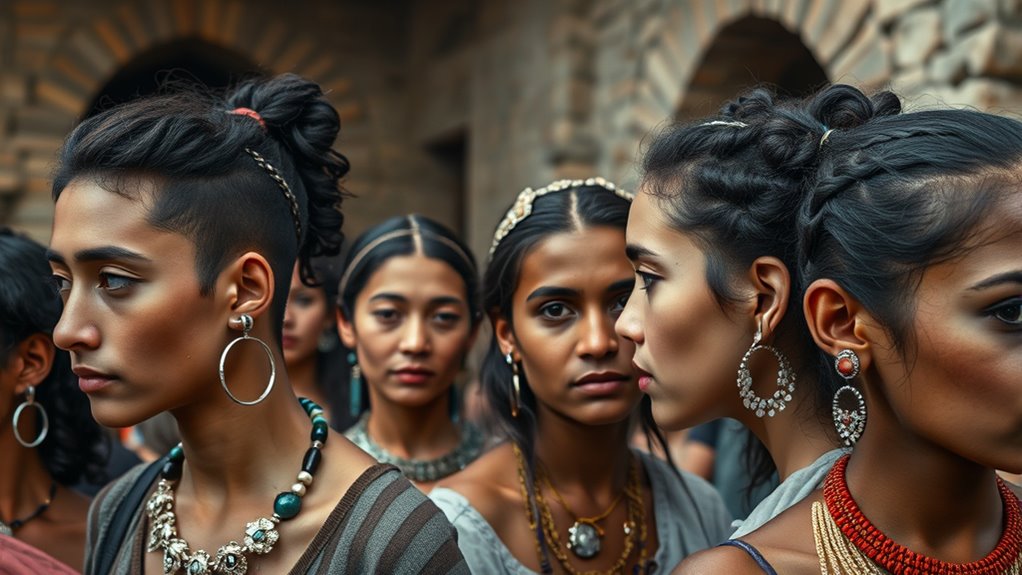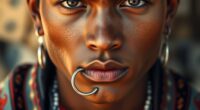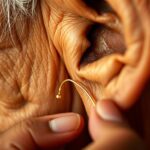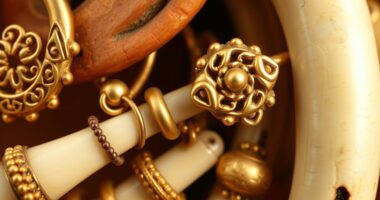Throughout history, piercings have symbolized social status, cultural identity, and hierarchy, from ancient societies where they marked wealth or leadership, to tribes that used them as rites of passage. They communicated social rank and spiritual beliefs, often indicating maturity or achievement. Style and placement further signaled group membership or rebellion. If you keep exploring, you’ll uncover even deeper insights into how body modifications continue to reflect societal roles across cultures.
Key Takeaways
- Ancient societies used piercings to signify wealth, social rank, and divine favor, especially among elites and leaders.
- Body modifications served as visual cues of social hierarchy, achievement, or spiritual beliefs within various cultures.
- Piercings often marked rites of passage, symbolizing transition into adulthood or elevated social status.
- Style and placement of piercings historically indicated social class, community ties, and group membership.
- Modern piercings continue to reflect social distinctions, identity, and challenge societal norms through their symbolism.
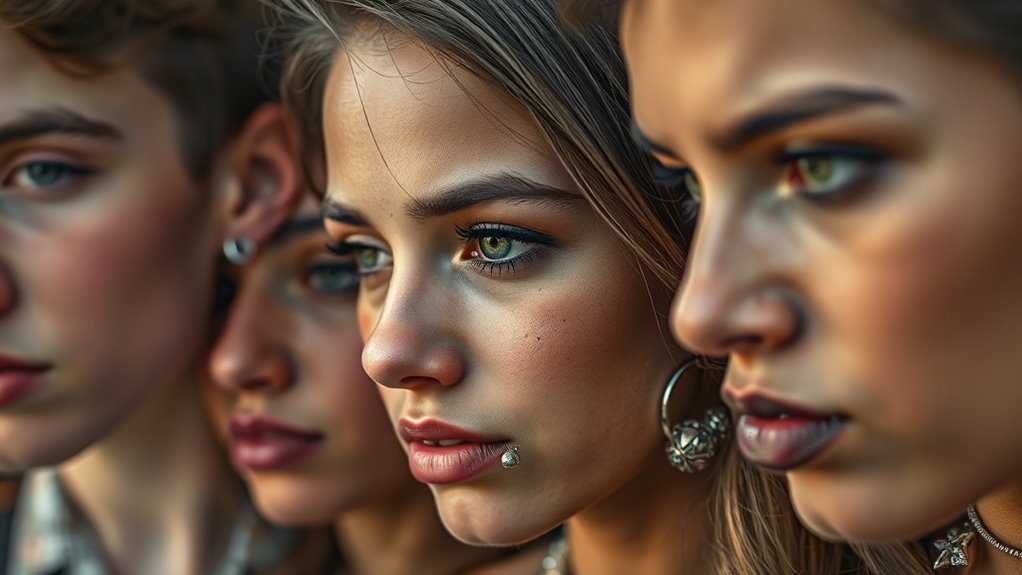
Piercings have long been more than just a fashion statement—they often serve as symbols of social status and identity. Throughout history, different cultures have used body modifications to convey messages about a person’s place within social structures. These adornments carry deep cultural symbolism, representing everything from spiritual beliefs to social hierarchy. When you see a piercing in a certain location or style, it’s likely more than decoration; it’s a visual cue about the wearer’s role, rank, or belonging within a community.
Piercings symbolize social status, identity, and cultural hierarchy beyond mere fashion choices.
In many ancient societies, facial piercings and body modifications signified wealth or high social standing. For example, in certain African tribes, elaborate lip or ear piercings were reserved for elders or leaders, marking authority and wisdom. Such adornments weren’t just aesthetic choices—they communicated the individual’s elevated status and their connection to cultural traditions. Similarly, in ancient Egypt, men and women of high rank wore specific jewelry and piercings to display their social hierarchy and divine favor. These symbols reinforced social order and distinguished the elite from common folk.
In other cultures, piercings served as rites of passage or markers of social advancement. The Maori of New Zealand, for instance, used intricate facial tattoos and piercings to symbolize maturity and social rank. These modifications signified a person’s transition into adulthood or elevated their standing within the tribe. The act of piercing itself, combined with the design and placement, became a language that communicated social hierarchy without words. It’s as if the body became a map of societal structure, where each piercing told a story of rank, achievement, or belonging.
Even in more recent history, the significance of piercings has continued to evolve but still reflects social distinctions. In certain subcultures, specific styles or placement of piercings can indicate membership in a particular group or social class. For some, a nose ring might symbolize rebellion or independence, while for others, a set of ear piercings could denote a connection to a specific community or tradition. These symbols help individuals assert their identity in relation to wider social groups, maintaining or challenging existing social hierarchies.
Frequently Asked Questions
How Did Ancient Civilizations Perceive Piercings’ Social Significance?
Ancient civilizations saw piercings as symbols of tribal identity and gender distinctions. You would notice that many cultures used piercings to mark social roles, achievements, or belonging to a specific group. For example, some tribes used facial piercings to distinguish genders or social ranks. These adornments communicated your status, gender, or allegiance, making piercings a powerful tool for expressing social and cultural identity.
Which Cultures Linked Specific Piercings to Royalty or Nobility?
You learn that ancient cultures like Egypt and India linked specific piercings to royalty symbolism and noble traditions. Egyptian pharaohs wore ear and nose piercings to signify divine authority, while Indian royalty used nose rings as a mark of noble status and cultural identity. These piercings served as symbols of power, connecting individuals to their royal or noble heritage, emphasizing their elevated social position and cultural importance.
Did Religious Beliefs Influence Perceptions of Piercings Historically?
Religious beliefs definitely influenced perceptions of piercings historically. You see, many cultures used piercings in religious rituals, viewing them as spiritual symbols or offerings to deities. For example, some tribes believed piercings connected them to spiritual worlds or marked divine favor. These practices showed that piercings weren’t just adornments but held deep spiritual symbolism, shaping how societies saw their significance and acceptability over time.
How Did Colonialism Impact Traditional Piercing Customs Worldwide?
Imagine your cultural identity as a vibrant tapestry, now torn by colonial influence. Colonialism often suppressed traditional piercing customs, replacing them with Western ideals, leading to cultural assimilation. For example, indigenous tribes’ unique facial piercings were discouraged or outlawed, erasing centuries of tradition. This impact stripped communities of their cultural expressions, forcing them to conform, and ultimately, their authentic identities became fragments, lost in the shadows of colonization.
Are Modern Social Media Trends Affecting Perceptions of Piercings’ Status?
You notice how viral trends and influencer impact on social media are shaping perceptions of piercings’ status today. As you see popular influencers showcase unique piercings, it elevates their social significance, making them more mainstream and trendy. This influence encourages you to view piercings not just as personal expression but also as symbols of social status, driven by the rapid spread of viral trends and the power of social media personalities.
Conclusion
Throughout history, piercings have served as vivid symbols of social status, much like a badge that signals your place in society. From ancient tribes to modern fashion, they’ve evolved but still carry meaning. As you consider your own piercings, remember they’re more than adornment—they’re a reflection of identity and culture. Just like a mirror shows your face, piercings reveal a part of who you are, connecting you to a long, fascinating tradition.

